Potřebujeme váš souhlas k využití jednotlivých dat, aby se vám mimo jiné mohly ukazovat informace týkající se vašich zájmů. Souhlas udělíte kliknutím na tlačítko „OK“.
ASTM F2579-10
Standard Specification for Amorphous Poly(lactide) and Poly(lactide-co-glycolide) Resins for Surgical Implants
Automaticky přeložený název:
Standard Specification pro amorfní poly (laktidem) a poly (laktido-glykolid) pryskyřice pro chirurgických implantátů
NORMA vydána dne 1.12.2010
Informace o normě:
Označení normy: ASTM F2579-10
Poznámka: NEPLATNÁ
Datum vydání normy: 1.12.2010
Kód zboží: NS-54175
Počet stran: 11
Přibližná hmotnost: 33 g (0.07 liber)
Země: Americká technická norma
Kategorie: Technické normy ASTM
Kategorie - podobné normy:
Anotace textu normy ASTM F2579-10 :
Keywords:
poly (dl-lactic acid), poly (dl-lactide), PdlLA, PGA:PLA, PLA, PLA:PGA, PLGA, polyglycolic:lactic acid, poly(glycolide-co-lactide), poly(glycolide:lactide), poly(lactic acid), polylactic:glycolic acid, poly(lactide), poly(lactide-co-glycolide), poly(lactide:glycolide), polylactide, Amorphous materials, Polylactide, Surgical implant resins--specifications, Surgical implants--specifications, ICS Number Code 11.040.40 (Implants for surgery, prothetics and orthotics)
Doplňující informace
| 1. Scope | ||||||||||||||||||||||||||
|
1.1 This specification covers virgin amorphous poly(lactide) homopolymer and poly(lactide-co-glycolide) copolymer resins intended for use in surgical implants. The poly(dl-lactide) homopolymers covered by this specification are considered to be amorphous (that is, void of crystallinity) and are polymerized either from meso-lactide or from equimolar (racemic) combinations of d-lactide and l-lactide. The poly(dl-lactide-co-glycolide) copolymers covered by this specification are also considered to be amorphous and are co-polymerized from a combination of glycolide and either meso-lactide or racemic quantities of d-lactide and l-lactide, and typically possess nominal mole fractions that equal or exceed 50 % lactide. 1.2 Since poly(glycolide) is commonly abbreviated as PGA for poly(glycolic acid) and poly(lactide) is commonly abbreviated as PLA for poly(lactic acid), these polymers are commonly referred to as PGA, PLA, and PLA:PGA resins for the hydrolytic byproducts to which they respectively degrade. PLA is a term that carries no stereoisomeric specificity and therefore encompasses both the amorphous atactic/syndiotactic dl-lactide-based polymers and copolymers as well as the isotactic d-PLA and l-PLA moieties, each of which carries potential for crystallization. Therefore, specific reference to dl-PLA is essential to appropriately differentiate the amorphous atactic/syndiotactic dl-lactide-based polymers and copolymers covered by this specification. Thus, inclusion of stereoisomeric specificity within the lactic acid-based acronyms results in the following: poly(l-lactide) as PlLA for poly(l-lactic acid), poly(d-lactide) as PdLA for poly(d-lactic acid), and poly(dl-lactide) as PdlLA for poly(dl-lactic acid). 1.3 This specification covers virgin amorphous poly(lactide)-based resins able to be fully solvated at 30°C by either methylene chloride (dichloromethane) or chloroform (trichloromethane). This specification is not applicable to lactide-based polymers or copolymers that possess isotactic polymeric segments sufficient in size to carry potential for lactide-based crystallization, which are covered by Specification F1925 and typically possess nominal mole fractions that equal or exceed 50 % l-lactide. This specification is not applicable to lactide-co-glycolide copolymers that possess glycolide segments sufficient in size to deliver potential for glycolide-based crystallization, thereby requiring fluorinated solvents for complete dissolution under room temperature conditions. This specification is specifically not applicable to lactide-co-glycolide copolymers with glycolide mole fractions greater than or equal to 70 % (65.3 % in mass fraction), which are covered by Specification F2313. This specification is not applicable to block copolymers or to polymers or copolymers synthesized from combinations of d-lactide and l-lactide that differ by more than 1.5 total mole percent (1.5 % of total moles). 1.4 This specification addresses material characteristics of both poly(dl-lactide) and poly(dl-lactide-co-glycolide) resins intended for use in surgical implants and does not apply to packaged and sterilized finished implants fabricated from these materials. 1.5 As with any material, some characteristics may be altered by processing techniques (such as molding, extrusion, machining, assembly, sterilization, and so forth) required for the production of a specific part or device. Therefore, properties of fabricated forms of this resin should be evaluated independently using appropriate test methods to assure safety and efficacy. 1.6 The values stated in SI units are to be regarded as standard. No other units of measurement are included in this standard. 1.7 This standard does not purport to address all of the safety concerns, if any, associated with its use. It is the responsibility of the user of this standard to establish appropriate safety and health practices and determine the applicability of regulatory limitations prior to use. |
||||||||||||||||||||||||||
| 2. Referenced Documents | ||||||||||||||||||||||||||
|
Podobné normy:
Historická
1.12.2011
Historická
1.9.2006
Historická
15.5.2014
Historická
1.3.2006
Historická
1.9.2010
Historická
1.9.2009
Doporučujeme:
Aktualizace zákonů
Chcete mít jistotu o platnosti užívaných předpisů?
Nabízíme Vám řešení, abyste mohli používat stále platné (aktuální) legislativní předpisy.
Chcete vědět více informací? Podívejte se na tuto stránku.



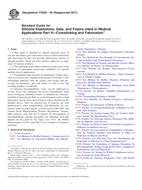 ASTM F2042-00(2011)..
ASTM F2042-00(2011)..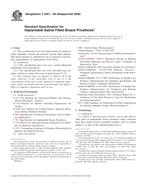 ASTM F2051-00(2006)..
ASTM F2051-00(2006)..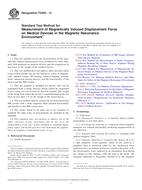 ASTM F2052-14
ASTM F2052-14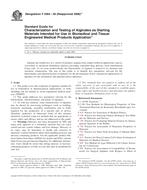 ASTM F2064-00(2006)e..
ASTM F2064-00(2006)e..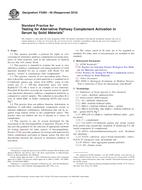 ASTM F2065-00(2010)..
ASTM F2065-00(2010)..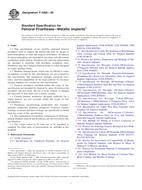 ASTM F2068-09
ASTM F2068-09
 Cookies
Cookies
